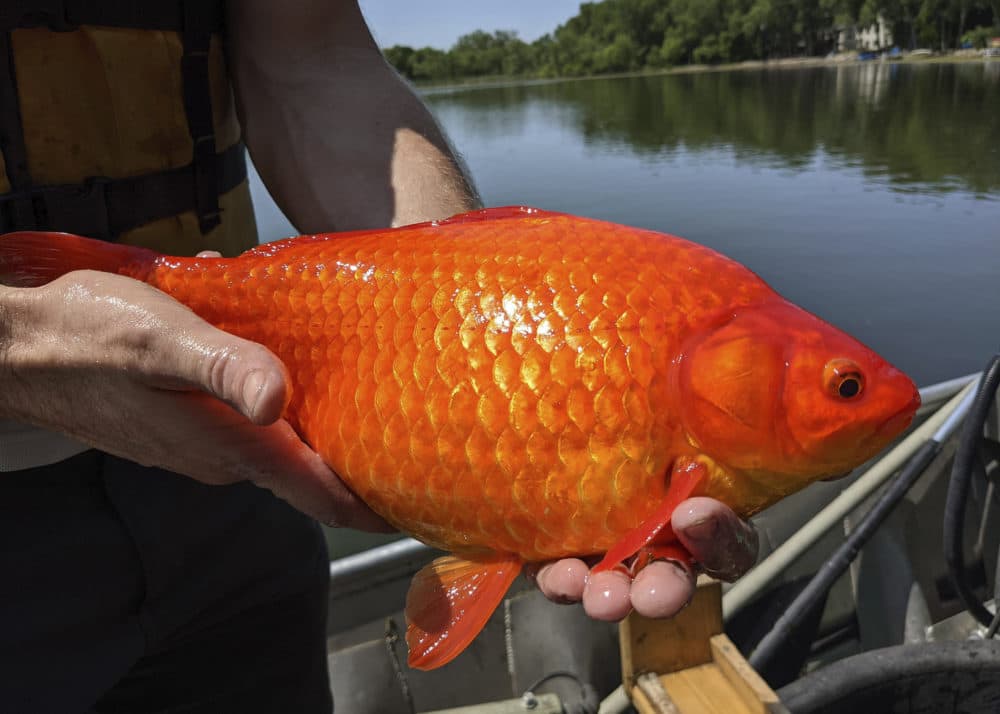Advertisement
City In Minnesota Warns Against Releasing Pet Goldfish In Lakes After Giant Goldfish Discovered
Resume
You may want to think twice before you release your pet goldfish into a local pond or lake.
Officials in Burnsville, Minnesota, south of Minneapolis, shared images of football-sized goldfish discovered in a local lake, warning residents to refrain from letting their goldfish swim free in the water.
“They grow bigger than you think…,” the city announced in a now viral tweet.
Drew YoungeDyke has seen the fish firsthand. He’s the director of conservation partnerships at the National Wildlife Federation.
“It's pretty alarming because we're certainly used to seeing maybe the [small-in-size] goldfish,” YoungeDyke says, “but they can certainly grow that large in the wild when they're exposed to that kind of food resource.”
Goldfish can grow to that massive size when they get placed into a new ecosystem, like a lake, he says. While there, they consume food resources that were available for the species already there, such as other fish and frogs.
YoungeDyke echoes the warnings of the City of Burnsville, saying individuals shouldn’t release their pet fish into lakes. Instead, he says, people should find someone else to take care of it or contact the Minnesota Department of Natural Resources or their local state agency.
“But whatever you do, please do not release it into wild waters,” he says.
While one fish in a lake might not pose a risk, it’s more dangerous once there’s a larger population of them. YoungeDyke says the fish might uproot the bottom structure of an aquatic system.
Being opportunistic feeders, he says goldfish also like to eat plants, insects and crustaceans, taking food away from the native creatures.
The problem has grown to the point where The Washington Post reported officials in Carver County, Minnesota, pulled an estimated 30,000 to 50,000 goldfish from the water in a single day.
Invasive species, like carp or its cousin the goldfish, are difficult to get rid of, he says.
Infrastructure projects have been set up to prevent an influx of carp in the Great Lakes ecosystem.
Those infrastructure projects include the Brandon Road Interbasin Project in Illinois, which is working to create dams that would prevent invasive carp from passing through the Mississippi River system and the Great Lakes watershed.
“We need to do our best to keep species that don't belong in an ecosystem out of it through prevention first,” YoungeDyke says. “Otherwise, it becomes this big, expensive problem if we let them in.”
Jeannette Muhammad produced this interview and edited it for broadcast with Todd Mundt. Muhammad also adapted this interview for the web.
This segment aired on July 15, 2021.

